An oral history of the star-studded 2011 NFL draft, five years later

This story originally appears in the May 2, 2016, edition of Sports Illustrated. Subscribe to the magazine here. Get all of Ben Baskin’s columns as soon as they’re published. Download the new Sports Illustrated app (iOS or Android) and personalize your experience by following your favorite teams and SI writers.
The 2011 NFL draft will go down as one of the most talent-laden ever—maybe the most. Already, nine of the first 11 picks have been selected to a Pro Bowl, more than have ever come from the first 11 of any modern-era draft, including the famed class of 1983. Which isn’t to suggest this was just a top-heavy class. The 2014 NFL rushing and sack leaders, plus today’s most feared corner in the league were all taken after the 69th pick. This is the behind-the-scenes story of how that class came to be.
On the clock: 1. Panthers 2. Broncos 3. Bills . . .
Mel Kiper Jr. (ESPN draft expert): Coming in, the highest-rated player on my big board was [LSU cornerback] Patrick Peterson. He was a can’t-miss prospect.
Patrick Peterson: I knew I was the best player in the draft, but I also knew I wasn’t going to be the No. 1 pick. It would have been cool to be the first cornerback to go No. 1, but I know how teams build—around the quarterback and pass rush. And Carolina needed a QB.
Marty Hurney (Panthers general manager): It all starts with that position. We’d taken Jimmy Clausen the year before in the second round. We still didn’t have that proven, elite franchise QB on our roster.
Ron Rivera (Panthers coach): When I first got [to Carolina] we talked about finding a franchise quarterback. I said, “He’s either on the roster or out there in the draft, but we have to go through everything to figure it out.”
Hurney: We looked closely at [Texas A&M linebacker] Von Miller, too. [Auburn quarterback] Cam [Newton] just jumped off the tape. The measurables: Arm strength, ability to look down field. . . . He looked to throw when pressure came.
Doug Whaley (Bills assistant GM): When we first started the draft process, we thought we’d have a good shot at Newton. [Stanford quarterback] Andrew Luck, had he come out, would have been the first pick. Denver was at No. 2, and they didn’t need a QB. So we thought, We’ll get Cam at No. 3.
Oral history of the 1971 NFL draft: The original Year of the Quarterback
Warren Moon (mentor to Cam Newton): Cam was set to meet with the Bills before his pro day, but he didn’t have the proper clothes. I said, “No way can you meet guys in your warmups.” That’s how important perception and image are to NFL owners. We ran to the mall. It’s not easy finding stuff off the rack for him.
Kiper: Andrew Luck staying at Stanford was huge. By March, I had Newton going No. 1 in my mock draft. He had so much more talent than anyone else. He was like Superman—if you could just square away the intangibles.
Adam Schefter (ESPN reporter): Marty Hurney was under a tremendous amount of pressure to not take Cam Newton. There were people ripping Cam left and right [mostly over pay-to-play allegations].
Cecil Newton (Cam Newton’s father): There was still a lot of scandal, a lot of misinformation out there, writers who said Cam wasn’t a leader. You really need to have thick skin.
Schefter: He was about as polarizing a figure as there could be for an eventual No. 1 pick.
Moon: There was a lot of selling of Cam to [Panthers owner Jerry] Richardson. He’s a real conservative guy. Cam is a little bit outgoing, and he had some history—things he went through in college. Mr. Richardson had to swallow that and digest it. Remember: He said he didn’t want a QB that had cornrows, tattoos all over. . . . This was going to be a sell job.
Cecil Newton: I sat with Coach Rivera; I met with Jerry Richardson privately. I didn’t know what he would think of me, and he didn’t know what I would think of him. It was a 2 1/2-hour session. It took some ice-breaking, but we warmed up.
Hurney: Ron and I met with Cam for four hours in a hotel outside Auburn. The more research we did, as we talked to everybody, they all said the same thing: Cam was dedicated, had a great work ethic. A lot of the things written about him we didn’t find to be true. From that process, it just felt like he was our guy.
Schefter: I hoped Marty was right. His job depended on it.
Cecil Newton: Our whole family was [at the draft]. The Panthers didn’t explicitly tell us, We’re going to take you. So we weren’t really sure whether Cam would be No. 1. He was really edgy.
Rivera: When the league told us we were on the board, we put the name in right away. There was no hesitation.
Ex-Panthers GM Hurney spends his days praising the team that let him go
Schefter: Marty Hurney stood in the face of the critics and did what he thought was right, and he turned out to be right. . . . Then he lost his job anyway [after Carolina started 1–5 in 2012]. . . . At No. 2, Miller was ticketed for Denver all along. They needed pass-rush help. And Von had no issues.
John Elway (Broncos GM): He was as athletic as anybody I’ve ever seen. That size and speed; that talent. . . . Obviously Cam was up there too. We looked there [despite having Tim Tebow and Kyle Orton on the roster].
Von Miller: I met John at the combine. I could tell on John’s face—I could tell on everybody’s face—they were really excited about meeting with me. They wanted me. It was different than any other meeting I had.
Whaley: On draft day we were thinking, Denver will probably go with [Alabama defensive tackle] Marcell Dareus, and then we’ll get Von Miller. We thought they’d go with an interior guy instead of an outside guy.
Schefter: I wish Doug had called me. That was one I knew.
Miller: At the draft, you kind of know—but you really don’t. I really didn’t know.
Elway: There were a lot of good football players [in that draft], but Von was a guy you could build an organization around.
Whaley: When Von went to Denver, everyone [in our draft room] had big smiles, everyone stood up. We had Marcell rated over Von. I was like, Don’t even listen to the [trade offers coming in], just turn that card in.
Kiper: The Bills had one of the worst rushing defenses. They needed a big body.
Whaley: With Marcell, you’re talking about a big, athletic man: 320 pounds, can run, is instinctive and a playmaker. A rare combination. . . . Cam, Von, Marcell—really, we wouldn’t have been wrong with any of those guys.
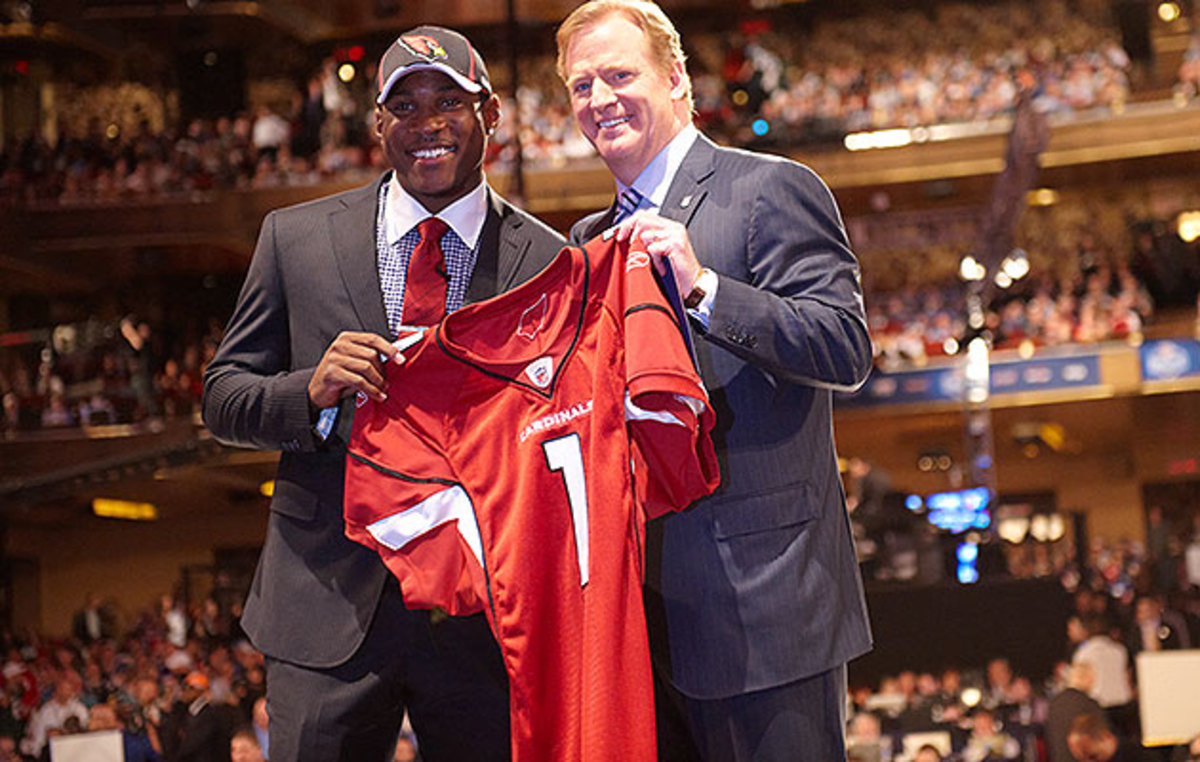
On the clock: 4. Bengals 5. Cardinals 6. Falcons . . .
Schefter: Nobody knew whether Cincinnati was taking [Georgia’s] A.J. Green or [Alabama’s] Julio Jones at No. 4. But everyone knew Atlanta [at No. 26] was trying to trade up for one of those two big receivers.
Kiper: I gave Green a 9.4 rating and I gave Jones a 9.3. Very close call. On my big board I had Green at No. 5, Jones at No. 8.
Duke Tobin (Bengals director of player personnel): They were both great players; we went back and forth. In the end, it partly came down to health throughout college. Julio had a little more injury history. And stylistically, A.J. was a better fit for us.
Les Snead (Falcons director of player personnel): [Falcons GM] Thomas [Dimitroff] figured out early on that we weren’t going to be able to move up and get A.J.
Tobin: We wanted the very best player we could get. It just so happened we got the guy we thought was the very best in the whole draft.
Peterson: As soon as A.J. Green’s name was called, to Cincy, my phone went off—a 602 number. I didn’t know that area code. I was like, Who’s this? I didn’t know what was going on.
NFL Mock Draft: Predicting the first three rounds
Rick Smith (Texans GM): There was one guy I fell in love with, who I absolutely wanted on our team, and who I’d prearranged a trade to move up [from 11] and get: Patrick Peterson. I arranged with San Francisco to move up to No. 7 if Peterson was available there.
Peterson: Honestly, I didn’t hear nothing about where I was going. Right before I walked into the green room, my dad was like, “I’m hearing Houston and Philly are trying to trade up and get you.” I don’t have any idea where my dad was getting this. But I was like, “Houston—that’s a good fit, close to home.”
Smith: I thought I had it down pretty good. I knew Nos. 1, 2, 3 and 4—they went exactly as we anticipated. And I knew what No. 6 would do. The only thing I was worried about was Arizona.
Peterson: I’d had one conversation with the Cardinals. Didn’t even have an official visit. Nothing. I guess they didn’t want anyone to know [their plan]. When the phone rang, I didn’t know that area code—but then coach [Ken] Whisenhunt and [GM] Rod Graves came on the line and congratulated me on being a Cardinal.
Snead: The question for us now was, If we can’t get A.J., should we go up and get Julio? And the more we really studied and dissected Julio, the more we were like, That’s our guy.
Thomas Dimitroff: Our trade to move up to No. 6 started to come together about two weeks before the draft. I spent a lot of time talking with [Browns GM] Tom Heckert. We have a good relationship.
Snead: Julio had a speed question coming out of college, but he proved to us at the combine that there was no speed issue.
Dimitroff: He had one of the best combines for a receiver in a long, long time. Could be historic, in my mind. . . .The morning of the draft, I woke up and saw a piece on ProFootballTalk.com that said another team was trading up for Jones. I immediately got on the phone with that team to see if [the rumor was true]. It wasn’t. Then I called Tom Heckert back and he was like, “Man, relax a little bit. We’re fine. We’ve already agreed upon this.”
Snead: The rest of us involved, we were preparing as if that wasn’t going to happen. Thomas was working behind the scenes.
Dimitroff: Julio was the full package, and that justified our compensation package. It was not five picks, though. We swapped first-round picks; then it was a 2 and a 4 and [in 2012] a 1 and a 4. That’s how we look at it.
Snead: You think about what the reaction will be when you make a trade like that. Then you realize, This is the NFL; everything you do is going to be covered and scrutinized and debated.
Dimitroff: You can’t sit on your hands. If you really believe in something, you have to step up and go for it. And when we actually pulled the trigger, it was a euphoric time.
Snead: With that came the knowledge that it was going to be pretty quiet the rest of the way. We’d just given up all our picks.
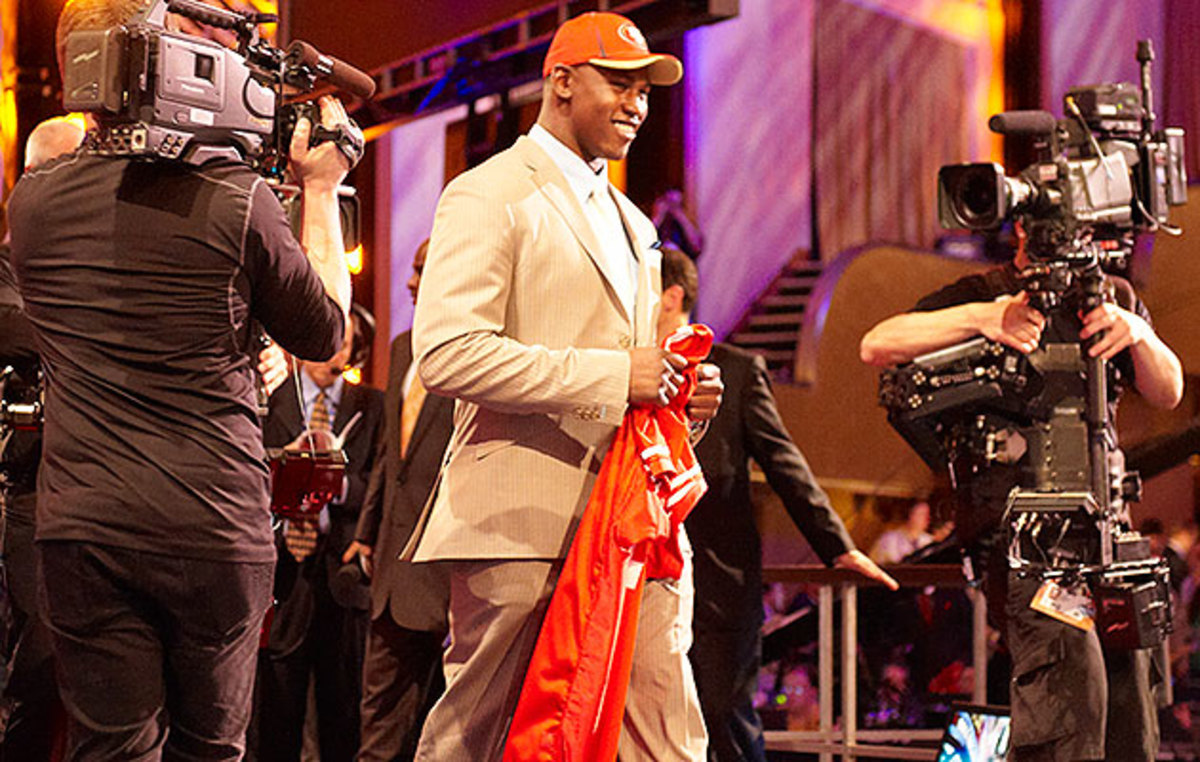
On the clock: 7. 49ers 8. Titans 9. Cowboys 10. Jaguars 11. Texans . . .
Smith: When San Francisco went on the clock, they called to see if we still wanted to trade up. We didn’t want to do it with Peterson gone. We needed to improve our pass rush, and while [Missouri linebacker] Aldon Smith was tempting, I didn’t feel strongly enough about him to move up.
Kiper: Smith had drawn comparisons to DeMarcus Ware. The only concern was that he was a one-year wonder at Missouri. That comparison looked really good for a few years—before he got into all the trouble. [Smith, picked by the 49ers, has been suspended for a total of 21 games over the past three years for substance abuse issues, a DUI and weapons charges.]
Greg Cosell (analyst; NFL Films senior producer): For the Titans, [Washington quarterback] Jake Locker was 6' 3", 231 pounds, superathletic, strong arm—but very scattershot. And he had what we call “slow eyes.” He didn’t see things real quick. I guarantee Tennessee knew he had these issues. Everybody did. They had to decide, If we draft Jake Locker, can we live with that? Can we fix it?
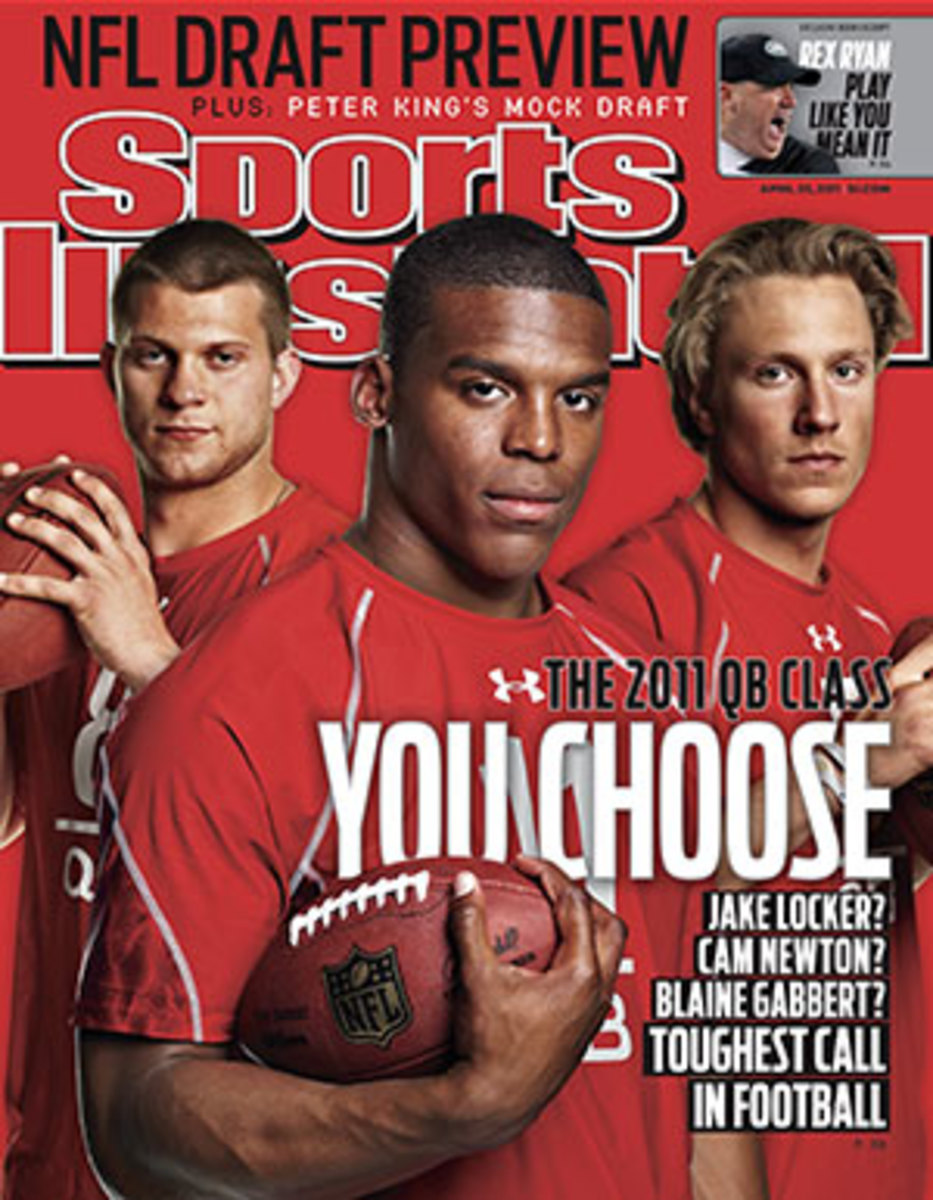
Kiper: Our first bust. There was mixed opinion on Locker, but everybody gave him a first-round grade. He had boom-or-bust written all over him.
Stephen Jones (Cowboys director of player personnel): It had been a long time since we used draft picks on the offensive line. [The Cowboys, in fact, had never taken an O-lineman in the first round since Jerry Jones bought the team in 1989.] But we needed to make an investment. There was a lot of talk between [USC tackle] Tyron Smith and [Colorado’s] Nate Solder and [Boston College’s] Anthony Castonzo. Tyron was young and light, but we knew he would certainly put on weight and grow into his body. He was athletic enough to adjust between right tackle and left tackle. We had him rated first on our board in terms of tackles; it was an easy pick.
Kiper: And then [Missouri quarterback] Blaine Gabbert [at No. 10, to Jacksonville] went where a lot of people thought he should. He drew comparisons to Drew Bledsoe, but I thought that was very optimistic.
Schefter: Quarterbacks always have an inflated value because of their position. Always.
Kiper: They’re hard to predict. A great amount of revisionist history takes place with quarterbacks. And if a team is wrong, it’s always the scouts and GMs who get blamed and fired. It’s rarely blamed on the coaching.
Mike Maccagnan (Texans director of college scouting): When quarterbacks start going off the board, they push other players down to you. Here it was Locker and Gabbert who helped us get [Wisconsin defensive end] J.J. Watt [at No. 11].
Schefter: J.J. was definitely not a sure thing. Someone told me he had a hard time beating double teams.
Kiper: The main question was, Can a guy who runs a 4.84 40 be a great pass rusher? Most pass rushers run 4.65 and below.
Cosell: He lined up inside a lot in college; he wasn’t really used as a pass rusher.
Complete 2016 NFL draft team needs
J.J. Watt: I understood people’s questions about me. I also understood that the draft isn’t an exact science. Nobody can perfectly predict how a guy is going to be one, two, four, five, 10 years down the road.
Maccagnan: Very early on in the process, Rick Smith and I were joking around, and Rick said, “You know who’s going to be our pick? J.J. Watt.” That was like a month in advance. Sometimes these things happen for a reason.
Rick Smith: We were moving toward a 3–4 defense, and one of the things you have to do in a 3–4 defense is shore up the edge. He had all the elements we thought were necessary to play that spot in our scheme.
Watt: I thought I’d fall somewhere in the middle of the first round, probably in that 17 to 18 range—New England, San Diego. . . . But I didn’t care where I went. I didn’t look at draft day as, “Oh, I need to get picked this high or by this team. . . .”
Maccagnan: We had a lot of discussions, weighing between [Auburn defensive tackle] Nick Fairley and J.J. But it became pretty clear we liked J.J. more than Nick [who would go at No. 13 to the Lions].
Watt: Before the draft, I took a picture in front of Radio City Music Hall. Nobody knew who I was. I was like, Tonight is pretty big, and my life is going to change.
Rick Smith: We loved the story of the guy who wanted to walk on and prove himself.
Watt: For the first eight picks I was just hanging out with my family, shooting the breeze, not really paying attention. I looked at that day like, Wherever I get picked, that’s just my starting point; then I go from there. When I got picked, I was over congratulating Blaine Gabbert. My agent grabbed me and was like, “Hey, you might want to sit down.” And then the phone rang.
• MMQB: Watt opens up on playing hurt, rehab and retirement
On the clock: 12. Vikings . . . 14. Rams . . . 24. Saints . . . 26. Ravens 27. Chiefs . . . 29. Bears 30. Jets . . .
Kiper: Christian Ponder going to Minnesota [at No. 12] was a surprise. I had him projected to go 41; the 85th-best player. That was a real reach. . . . But if you look at the rest of round 1, it was tremendous all the way through. The highest grade among D-lineman, [North Carolina defensive end] Robert Quinn, went 14th [to the Rams]. [Cal defensive end] Cameron Jordan had a much higher grade for me than where he went. I had him 16th best; he went 24 [to the Saints].
Eric DeCosta (Ravens director of player personnel): We were picking at 26, and we got a call from the Bears. They were at 29 and were interested in coming up to our spot to get [Wisconsin tackle] Gabe Carimi. We thought we could trade back and still get [Colorado corner] Jimmy Smith. They offered us a fourth-round pick to come up. We agreed. We called the league office and said we’d made a trade. We got a call back saying the Bears had never called them. Somebody [with the Bears] dropped the ball, didn’t call the league. So the time runs out on us, and we don’t get our pick in, which would have been Smith. The Chiefs jump up and draft in our spot: [Pitt receiver] Jonathan Baldwin. We ended up getting Jimmy, and the Bears stood pat and got their guy, Carimi. So it worked out O.K.
Kiper: [Temple defensive end] Muhammad Wilkerson went 30th [to the Jets]. I had him as the 11th-best player. Another steal. In the end, maybe 23 of 32 teams should be very satisfied with their first-round pick. Of the top 15, the only busts were those three quarterbacks.
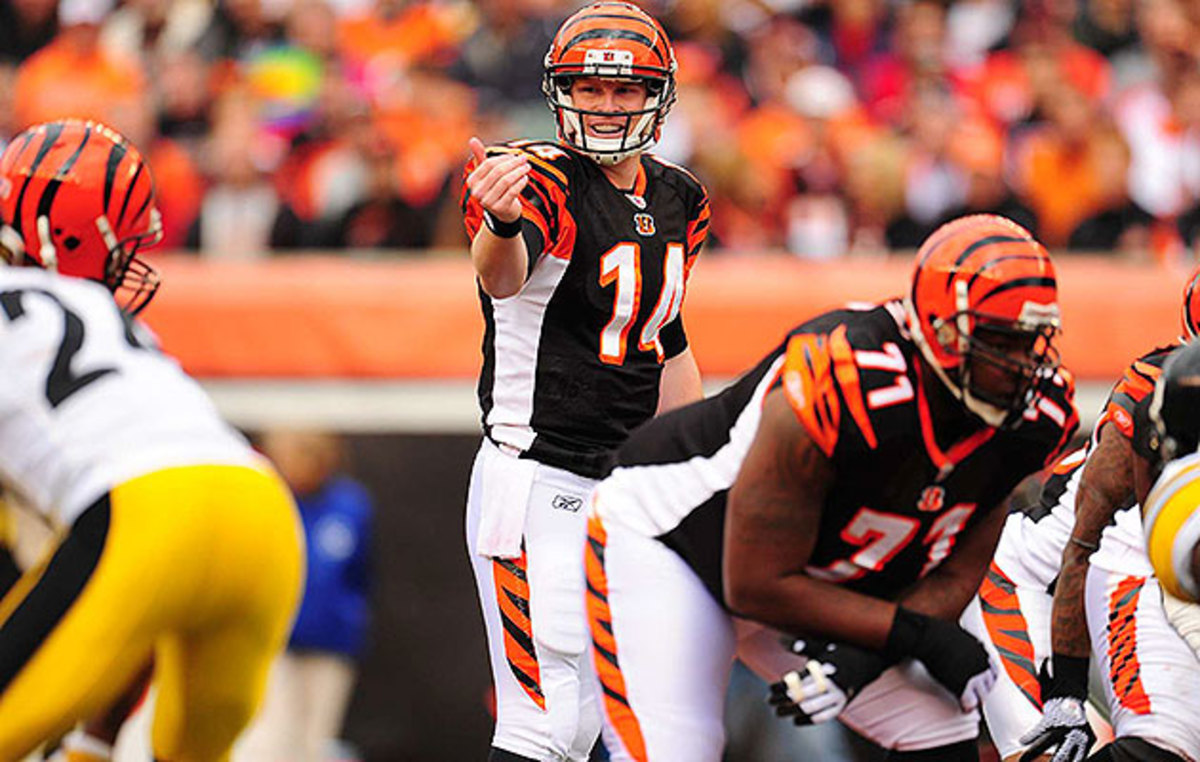
On the clock: 34. Bills 35. Bengals 36. 49ers . . .
Schefter: The Bengals were dying for [TCU quarterback] Andy Dalton. They had to resist the urge to trade up. It’s not the Bengals’ way.
Tobin: It wasn’t a big secret. We had to have a QB who could come in and start right away. And Andy wasn’t a one- or two-year starter at TCU; he was the guy the whole time.
Andy Dalton: I met with them five times before the draft—at the Senior Bowl, the combine, my pro day, a private workout and a team visit—so I knew they liked me. I didn’t think I’d make it past Cincinnati in the second round. That was the lowest I could go.
Tobin: We were analyzing the teams ahead of us that might take a quarterback, who they’d worked out. It was a gamble [not trading up].
Cosell: Castonzo was taken in the first round by Indianapolis [at 22]. But I know for a fact they were debating between Dalton and Castonzo. That was back when they had the QB question, with Peyton’s neck [injury].
Tobin: Did we know that to be true? No. There’s nothing you know when it comes to other teams’ intentions. You think you have intel, but you don’t know where it’s coming from.
Dalton: In the years since, I’ve heard the 49ers [at No. 36] tried to trade up for me, and the Seahawks [No. 25] were deciding between me and [Alabama tackle] James Carpenter.
Tobin: We discussed trading up. But we had a lot of experienced guys in the draft room; calmer heads prevailed.
Dalton: When you watch the draft on TV, there’s a delay. The Bills [at No. 34] picked right before the Bengals, and they were a possibility as well. On my TV, the Bills were on the clock when I got the call, so I wasn’t sure if it was Buffalo or Cincinnati. It was [Bengals coach] Marvin Lewis.
Kiper: The Bengals got A.J. Green and then Andy Dalton. The 49ers got Aldon Smith and then [at No. 36, Nevada QB] Colin Kaepernick. Sometimes it’s best to wait for a quarterback to slide through the cracks.
• MAYS: The New Andy Dalton | BURKE: NFL draft position rankings
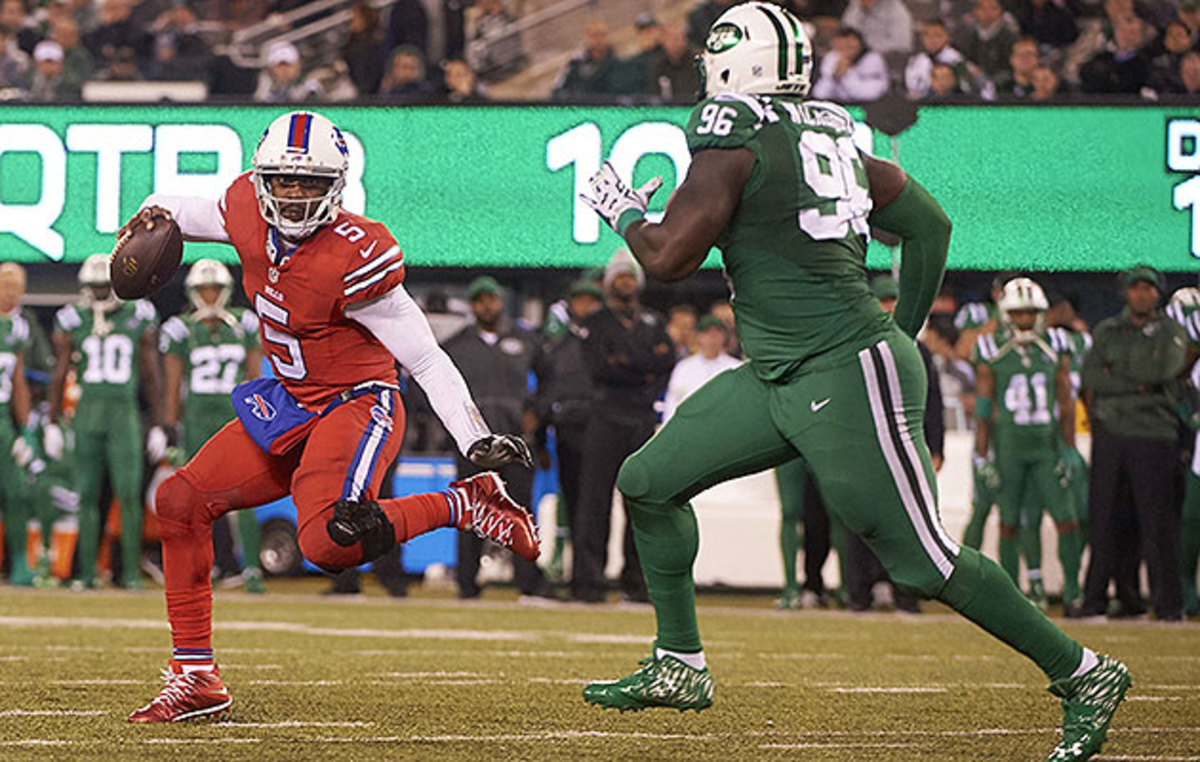
On the clock: 58. Ravens . . . 70. Chiefs . . . 71. Cowboys . . . 154. Seahawks . . . 180. Ravens . . .
DeCosta: We had a first-round grade on [Maryland receiver] Torrey Smith and took him in the second round [at No. 58]. Torrey’s real first name is James. And our first two picks both had the same agent, Drew Rosenhaus. So basically we drafted two Jimmy Smiths, back-to-back, with the same agent. And that worked out really well for us.
Kiper: The main thing with [Georgia linebacker] Justin Houston: He was up-and-down as a player. Real inconsistent. His workout numbers and production were incredible, but week to week. . . .
Cosell: People liked him as a pass rusher, but not to the point where he made people say, Wow!
Kiper: But when you thought he could have been a first-round pick at one point, that’s a steal [at No. 70, to the Chiefs].
The long journey of Justin Houston, one of the NFL’s great mysteries
Jones: We had a lower-second-round grade on [Oklahoma running back] DeMarco Murray; in the third round it was an easy pick for us. Before the draft I’d spent a lot of time on the phone with [former Cowboys coach] Barry Switzer, who was up there in Norman on a regular basis and certainly knew what a good back looked like. Our biggest concern was DeMarco’s durability; he’d been hurt off and on. On top of that, was he physical? Barry said he could be—and DeMarco ended up surprising us with how physical he was.
Kiper: Richard Sherman, I gave him a fourth-, fifth-round grade. He went where a lot of people thought he would, with the Seahawks [fifth round, No. 154]. He was a receiver who as a fourth-year junior moved to corner. Got beaten at times, didn’t have great recovery speed, a little raw in coverage. . . . How many Hall of Famers do you get at that point in the draft?
DeCosta: If there’s a quarterback [around this late] that we think is talented enough to be a good player, we’re going to take him regardless of who we have on the roster. And at that time, you were starting to see the league change—mobile- passers who could make plays with their feet, the Wildcat offense. . . .
Kiper: It’s very hard to find a starting QB in those later rounds. And not many teams believed [Virginia Tech’s] Tyrod Taylor could be a QB at the next level. I gave him a second- to fourth-round grade. He protected you against the bust—even if he didn’t make it as a QB, he was such an athlete that he had a chance to play something else.
DeCosta: [Ravens offensive coordinator Cam Cameron] pushed us to take Tyrod because he thought there was a lot to work with. Worst case, we could run plays with Tyrod in the backfield, as a receiver, possibly even use him as a return man. It would have been very, very difficult for teams to plan against Joe Flacco, with his arm, and also Tyrod, with all the things he brings to the table.
Kiper: The Ravens got a steal [at No. 180]. And after they developed him, he ended up being pretty good for Buffalo last year.
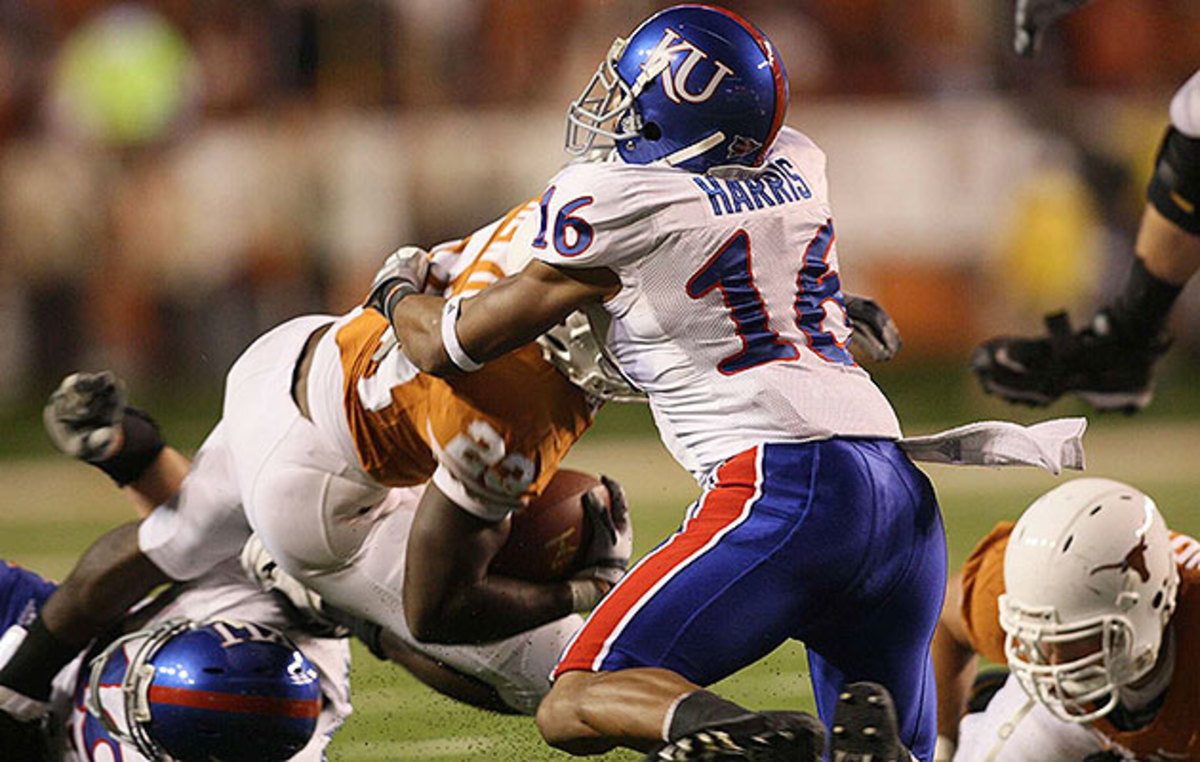
Undrafted: Oklahoma State K Dan Bailey (Cowboys), Kentucky WR Chris Matthews (Browns), Grambling State TE Larry Donnell (Giants), South Carolina FB Patrick DiMarco (Chargers), Kansas CB Chris Harris Jr. (Broncos) . . .
Chris Harris Jr.: It was hard for me to find an agent; a lot of guys turned me down. But what made it even harder is that after the draft, teams couldn’t pick up undrafted guys like me right away because of the lockout. We couldn’t talk to anybody. I had to wait until July before I actually knew where I was going.
Dalton: We could do the media stuff the next day, but then we couldn’t even talk to coaches. We didn’t have OTAs, any of the minicamp stuff.
Kiper: They didn’t settle the lockout until July, so the off-season work—that prep that puts these players in a better position entering the season—they didn’t have that. Maybe that’s one reason Jake Locker and Christian Ponder and Blaine Gabbert were slow to contribute.
Dalton: You want to have time to learn an offense and get to know the guys around you. We didn’t have that.
Harris: That whole time, from April to July, I’m thinking, Man, am I going to be in the league? When the lockout ends, will they know about me? The Broncos were really the only team that wanted me. As soon as the lockout was up, they called me the next day.
Though often overlooked, Broncos' Harris is now one of NFL's top CBs
Peterson: That whole lockout was pretty weird. But that’s when I got into golf. And I’m pretty good now. So it was O.K.
Kiper: This has to be up there pretty high in all-time draft history, when you look at it all the way through.
Peterson: I knew back then, in 2011—I went on record—that this could be the best draft in NFL history. I played against almost every guy in the top 10. I knew what these guys could do.
Watt: Go down the list; it’s incredible. This group has the potential to be one of the best ever. I have a sense of pride looking around the league and seeing the guys I came in with doing so well.
Peterson: The 2011 class has so many future Hall of Famers. You have a three-time Defensive Player of the Year, two Offensive Player of the Year winners, two Super Bowl MVPs, two guys who have been in five consecutive Pro Bowls. You have Cam breaking quarterback records, me breaking punt-return records, Von Miller breaking sack records, J.J. Watt being a man amongst children. . . .
Watt: And we’re only five years in.
Additional reporting by Greg Bishop
